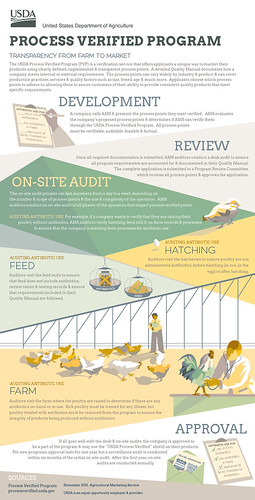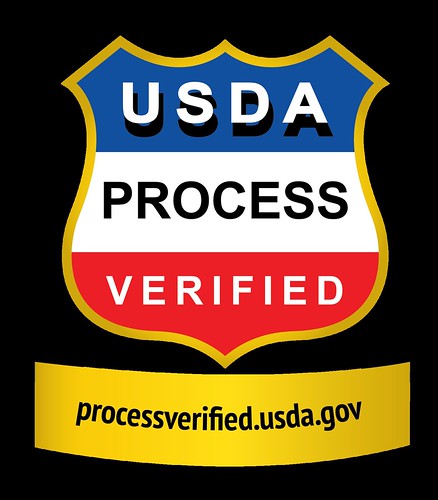
Product labeling is a contract of trust between consumers and producers. This is especially true for the foods we eat and the companies that sell them. The responsibility of regulating and monitoring food labels is shared between many federal agencies including the Food and Drug Administration (FDA) and USDA, and we recognize that there must be transparency and accountability before there can be public trust and understanding of product labels.
While my own agency, USDA’s Agricultural Marketing Service (AMS), does not approve many product labels directly, we do provide a service where AMS auditors provide an objective, third-party verification on any food product that a company’s labeling claims are backed by plain language standards. Transparency and accountability are the cornerstones of this service, and we are continuously working to improve both for all of our auditing programs, with our most recent efforts focusing on USDA’s Process Verified Program (PVP).
USDA’s PVP is designed to provide verification of specific product standards that a company has committed themselves to meet. The backbone of USDA’s PVP is the International Organization for Standardization’s (ISO) guidelines for quality management systems auditing—an internationally-recognized set of guidelines used for evaluating program documentation and determining how on-site audits should be conducted. The guidelines are designed to ensure that a production system is operating within the parameters that a company has set for itself.
AMS auditors undergo extensive training in ISO requirements and audit principles, as well as specific training for the standards they are auditing, which helps ensure the consistency, objectivity, and validity of our auditing services.
Here is how the process works:
Step 1 - Development: A company calls AMS and presents the standard they want to meet. This standard could be an international standard, an industry-wide standard, or a standard a company developed itself. The applicant’s quality management system describes how they will adhere to requirements and the scope of their program–including all phases of production and marketing, and can include retail distribution. Their quality manual documents and defines the process verified points, procedures, records, policies and objectives, along with any additional required components.
AMS then works with that company to develop an auditing solution that will verify the company’s adherence to the standard and how they plan to add the USDA PVP information to their product packaging. The standard must be verifiable, repeatable, auditable, feasible, and factual.
Step 2 - Review: Once all required documentation is submitted, AMS auditors conduct a desk audit to ensure all program requirements are accounted for & documented in their Quality Manual. The complete application is submitted to a Program Review Committee, which reviews all process points & approves the application.
Step 3 – On-site audit: The on-site audit process can last anywhere from a day to a week depending on the number and scope of process points, and the size and complexity of the operation.
Audit example: If a company wants to verify they are raising poultry without antibiotics, AMS auditors would follow the flock from the time of hatching to the marketplace.
- Hatching: Auditors visit the hatcheries to ensure process points are being met. For a “no antibiotic” claim, AMS would verify that poultry are not administered antibiotics, before hatching (in ovo, in the egg) or after hatching.
- Feed: Auditors visit the feed mills to ensure that feed does not include antibiotics, review ration & testing records & ensure that requirements included in their Quality Manual are followed.
- Farm: Auditors visit the farm where the poultry are raised to determine if there are any antibiotics on-hand or in use. Sick poultry must be treated for any illness, but poultry treated with antibiotics must be removed from the program to ensure the integrity of products being produced without antibiotics.
- Processing: Finally, auditors visit the processing plant to ensure there is proper segregation of product and accurate labeling of USDA PVP products.
Throughout the process, company employees are interviewed to ensure the company as a whole is familiar with and adhering to the program requirements.
Step 4 - Approval: If all goes well with the desk & on-site audits, the company is approved to and may use the “USDA Process Verified” shield on their products. For new programs, approval lasts for one year but a surveillance audit is conducted within six months of the initial on-site audit. After the first year, on-site audits are conducted annually. To ensure transparency, we post a list of all companies with approved PVPs, their audited process points, the standards behind those processing points, marketing claims, and labeling information on our website.
USDA and AMS are committed to the transparency and accountability of our auditing services, so that consumers and buyers can make informed decisions about the products they purchase. From farm to market, USDA labels—like the USDA Process Verified shield—will continue to represent the quality, objectivity, and integrity that consumers rely on and trust.



